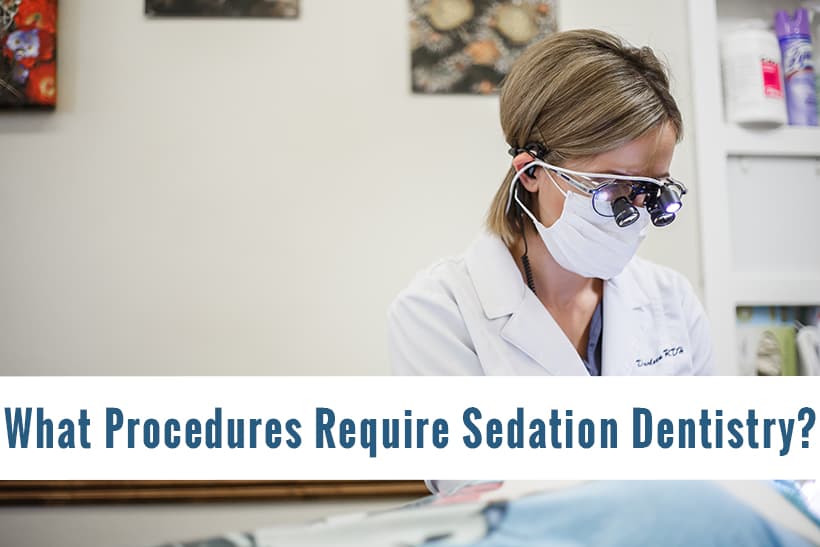
Fear… it’s the number one reason as to why patients put off or avoid dental treatment. For some, the fear was created by a past dental experience that was painful or traumatic. For others, fear may have been created through hearing other’s experiences. Others report that reading an article or watching a dental news story created fear within them. Must these patients push through their fears or could something such as sedation dentistry be beneficial to them? Learn more about it here at Riverside Dental Care.
What Is Sedation Dentistry And How Does It Work?
Sedation dentistry uses medication to help patients relax during dental procedures. When patients are relaxed, the dentist can complete procedures smoothly knowing that their patients aren’t stressed or in pain. Sedation can happen in different forms such as through breathing nitrous oxide, taking an oral pill, receiving medication via IV, or through general anesthesia. Patients are usually awake for all of these forms except those who are under general anesthesia.
Are There Different Levels Of Sedation In Dentistry?
Yes, there are different levels of sedation. Listed below are 4 different levels of sedation along with a brief description of what the patient experiences at these levels of sedation:
1. Minimal Sedation – In this level, a patient is relaxed but still awake. An example of this type of sedation is nitrous oxide.
2. Moderate Sedation – A patient under moderate sedation may slur words and not remember the procedure.
3. Deep Sedation – Patients in deep sedation may be on the edge of consciousness but they can still be awakened.
4. General Anesthesia – Patients in this level are unconscious.
When Might Sedation Be Used?
Sedation can be used in many different scenarios and situations. If a patient is highly anxious or has extreme fear when it comes to dental offices, sedation may even be used for their teeth cleaning. Nitrous oxide could be a good option for these patients as it is a very minimal sedation but will yet help to relax them.
Sedation is often chosen based on one’s pain threshold and how big of a procedure is being done. Many patients have general anesthesia when having wisdom teeth removed but there are also patients that don’t have any sedation at all.
Other procedures that often have more advanced levels of sedation dentistry include implants, jaw surgery, bone grafting, and emergency room dental treatment. Most of these procedures are more involved and bring with them greater levels of pain. The surgery procedures often take more time and your dentist wants you to be comfortable throughout the entire procedure.
Can I Request Sedation For My Dentistry?
Absolutely. Here at our office, we want you to be comfortable and at ease when you receive treatment. It is important to remember that there is no one type of sedation that is right for everyone. Some patients find more success with certain types of sedation than others. Certain medical issues may also limit the type of sedation that is recommended for you. The best thing to do in finding a sedation option most beneficial for you is to talk to your dentist. Your dentist will take your dental history, medical history, treatment plan, and level of fear and comfort into consideration as they help you select the sedation that is best for you.
It’s important to not let fear nor anxiety keep you from getting the treatment that you need. Your comfort is important to us and if that means that you prefer sedation for your dental treatment, we are happy to accommodate. To schedule your next appointment in comfort, please call us or schedule an appointment online.



Leave a Reply